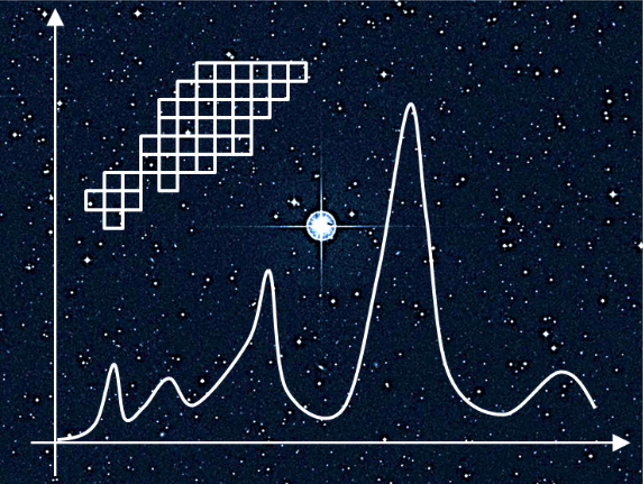A new analysis of nuclear reactions raises questions about the evolution of the oldest stars
The oldest stars, which date back more than 13 billion years, show surprisingly high calcium abundances. Among the various models suggested by astrophysicists to explain this curious behaviour, one of the most accredited is based on the fact that these old stars originated from material coming from a generation of primeval massive stars, formed shortly after the big bang. These primeval stars would end their existence in a faint-supernova process and would produce elements up to the calcium region. To do this, the primeval stars should burn hydrogen into calcium through a series of so-called breakout reactions.
Among all these reactions, those involving a proton and a fluorine-19 nucleus represent a critical turning point on the path toward calcium: if the reaction leads to the emission of a gamma ray and a neon-20 nucleus, the nucleosynthesis process goes on, while if it leads to the production of an alpha particle and an oxygen-16 nucleus, the process takes a backward step.
Given the particularly delicate role of these nuclear reactions, a group of American, Canadian, and Italian researchers collected and analysed, through refined quantum models of nuclear reactions, the experimental data that have been accumulating in the literature for over seventy years on collisions between protons and fluorine-19 nuclei. In this way, new estimates have been obtained on the rates of these nuclear reactions in stars and on their uncertainties, which have been used to perform complex calculations of stellar nucleosynthesis. The obtained calcium abundance is much lower than that observed experimentally, despite the considerable uncertainties due to the poor knowledge of the nuclear structure of some states in neon-20. This new tension between theoretical predictions and experimental observations on calcium in the oldest stars casts doubts on the consistency of faint supernova processes and draws attention to the need to obtain new data on low-energy p+19F nuclear reactions.
Because of the impact of the results obtained on one of the most debated astrophysical scenarios today, the work was reported as Editors' Suggestions of the Physical Review C journal and was the subject of a synopsis in the prestigious magazine Physics of the American Physical Society.
On the Italian side, Ivano Lombardo, researcher of the INFN Section of Catania, contributed to this research work. In the past years he has carried out various low energy measurements at the INFN Laboratori Nazionali di Legnaro and at the Tandem accelerator of Federico II University of Naples on the p + 19F nuclear reaction channels with the emission of an alpha particle and an oxygen-16 nucleus.
For more information on this research topic, the reader is referred to the original article:
R. J. deBoer, O. Clarkson, A. J. Couture, J. Görres, F. Herwig, I. Lombardo, P. Scholz and M. Wiescher, 19F(p, γ)20Ne and 19F(p,α)16O reaction rates and their effect on calcium production in Population III stars from hot CNO breakout, PHYSICAL REVIEW C 103, 055815 (2021)
and to the synopsis in Physics:
M. Schirber, Uncertainty over First Stars, May 26, 2021 • Physics 14, s66
